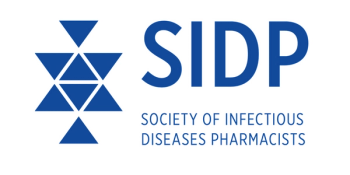
Single Dose Oritavancin May Lower 30-Day SSTI Hospital Admission Rates
Treating patients who have skin and soft tissue infections with a single dose of oritavancin may lower hospital admission rates compared to vancomycin, at a similar cost.
In the United States, skin and soft tissue infections (SSTIs) are the seventh most common diagnosis. Annual costs associated with treatment exceed $15 billion and hospital admission is central driver of the high price tag. However, many SSTI patients are unnecessarily hospitalized and could be safely managed in an outpatient setting at lower costs.
A common difficulty in administering outpatient antibiotics is maintaining patient adherence. It has been hypothesized by some clinicians that single-dose treatments have the potential to shift care from the inpatient to the outpatient setting. Oritavancin, a lipoglycopeptide antibiotic, can be administered intravenously in a single-dose in an outpatient treatment. Vancomycin, on the other hand, is an antibiotic currently in use for SSTIs that requires multiple doses per day.
A new study in
Investigators conducted a retrospective, observational cohort analysis of the MarketScan Commercial Claims and Encounters Database containing inpatient, outpatient, and prescription drug experiences of approximately 137.6 million people covered under a variety of health plans. The analysis concerned MarketScan databases between January 1, 2016 and November 30, 2016.
The study examined patients who were 18 years or older who had a prescription or medical claim for oritavancin or vancomycin in an outpatient setting, and a non-diagnostic medical claim with a skin infection diagnosis < 7 days prior and 3 days after the index date. In total, 120 patients who received oritavancin and 6695 patients who received vancomycin met inclusion criteria. There were no significant differences in demographics, pre-clinical comorbidities, pre-health care resource utilization, type of skin infection, or infection severity at diagnosis.
After covariate adjustment, patients who received oritavancin had significantly lower 30-day admission than those who received vancomycin (6.1% vs 16.2%, P = 0.003). Mean health care costs were similar between the 2 groups.
In the unadjusted analysis patients receiving oritavancin had an average 30-day cost of $10,096 compared to patients receiving vancomycin who had an average cost of $12,779 (P = .0.3). After multivariate analysis, the average costs were $1,2695 and $12,717, respectively.
Study authors reported that the central component of 30-day health care costs in the oritavancin group was outpatient service visits encapsulating the drug acquisition and administration costs. Comparatively, the major drivers of cost for the vancomycin group were inpatient admissions, emergency department visits, and outpatient services. Investigators noted that patients covered by Medicare part B usually pay 20% of costs with each visit for a parenteral antibiotic infusion.
“At first glance, the comparable 30-day costs suggest that efficiency of care is similar,” the study authors wrote in their report. “While this is true, this does not take into account patient perspective and patient-reported outcomes, which are increasingly important metrics for health care systems.” They cited earlier research showing single dose intravenous therapy was preferred among patients being treated for SSTIs. Vancomycin requires several doses per day, with serum concentrations checked and monitored.
Investigators recommended future comparator studies to validate their results. Additionally, future studies should collect patient experience data as part of the benefit-risk assessment and evaluate the impact of treatment duration on patient outcomes.
Newsletter
Stay ahead of emerging infectious disease threats with expert insights and breaking research. Subscribe now to get updates delivered straight to your inbox.






























































































































































































































































































